The name of this pub recalls the ferry to Widnes West Bank. Established in c1178, the ferry boat carried passengers across the Mersey for centuries, until the opening of the Transporter Bridge in 1905. A regular ferry was first established around 1178, by the sixth Baron of Halton, John FitzRichard. The ferry, comprising nothing more than a rowing boat, continued to be used for centuries. The opening of the Ethelfleda Railway Bridge, 14 years later, was the beginning of the end for the ferry.
A painting entitled The Glass Barrel.
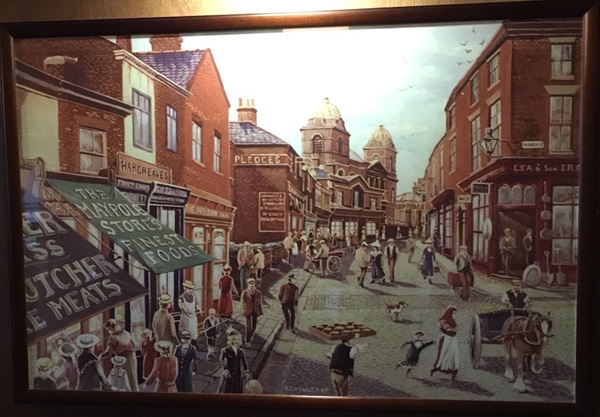
This was a great venue for the old townsmen, opposite the new swimming baths and the old town market. The mighty Transporter Bridge is in the background. This street was connected to Lea’s Corner and Bradley’s Corner.
A painting entitled Three Bridges.
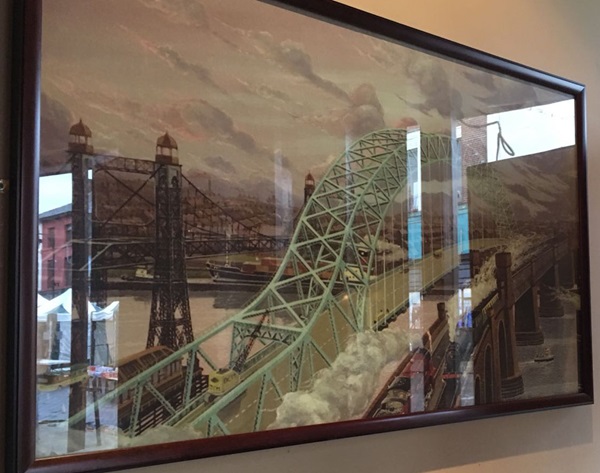
This scene was possible for just one day in 1961, when the road bridge was completed and before the ‘Tranny’ was dismantled. The opening of the new bridge began the new Runcorn, whose population has since quadrupled.
A painting entitled The Top Locks.
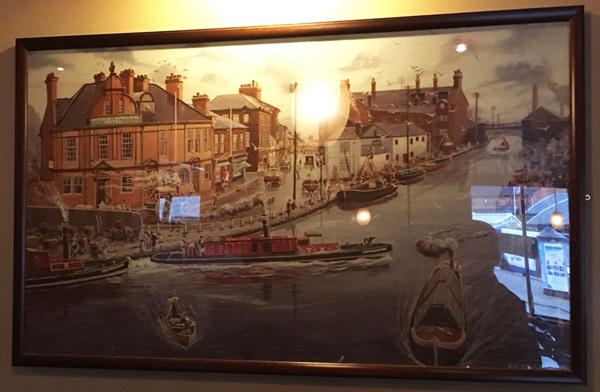
The Bridgewater Canal was connected to the Manchester Ship Canal by a series of locks. The canals were the lifeblood of Runcorn, feeding the vast tanneries, as well as carrying other types of cargo and passenger traffic.
A painting entitled Sunrise of the Boatyards.
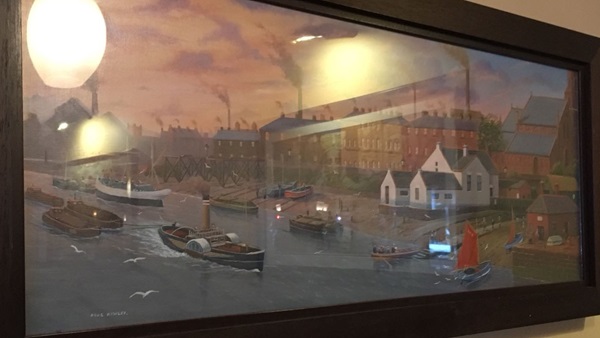
A view of the Runcorn ferry looking towards the old flourmill, the parish church dwarfs, the Belvedere boatyards and the old swimming baths. River traffic includes barges and tugs. The boatyard built many fine ships, including shallow draught vessels like paddletugs, and tall masted, highly sea worthy, sailing ships. The boatyard was closed down prior to the building of the gantry wall for the Manchester Ship Canal.
Prints and text about Sir Thomas Hall Caine.
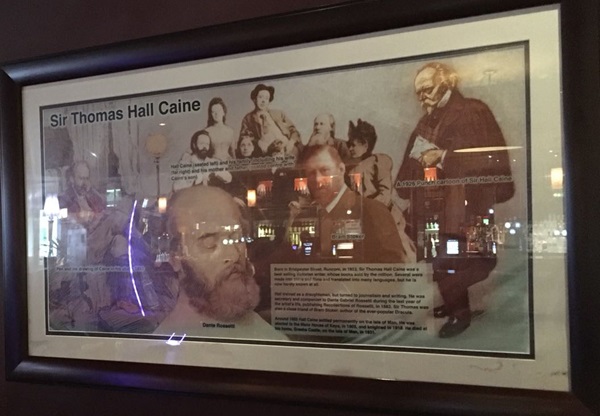
The text reads: Born in Bridgwater Street, Runcorn, in 1853, Sir Thomas Hall Caine was a best-selling Victorian writer, whose books sold by the millions. Several were made into plays and films and translated into many languages, but he is now hardly known at all.
Hall trained as a draughtsman, but turned to journalism and writing. He was secretary and companion to Dante Gabriel Rossetti during the last year of the artist’s life, publishing Recollections of Rossetti, in 1882. Sir Thomas was also a close friend of Bram Stoker, author of the ever popular Dracula.
Around 1885 Hall Caine settled permanently on the Isle of Man. He was elected to the Manx House of Keys, in 1903, and knighted in 1918. He died at his home, Greeba Castle, on the Isle of Man, in 1931.
A copy of an oil painting of Sir Thomas Hall Caine, by RE Morrison.
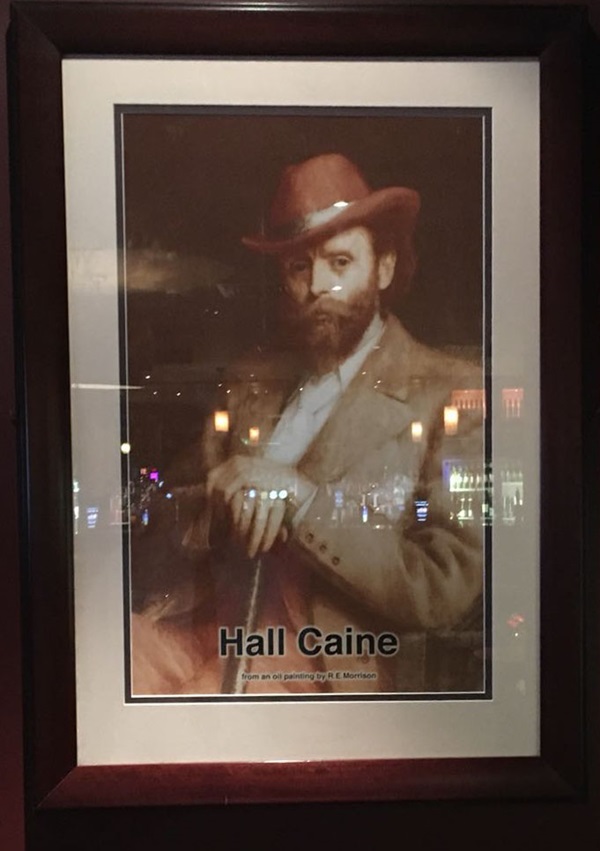
Prints and text about the Manchester Ship Canal.
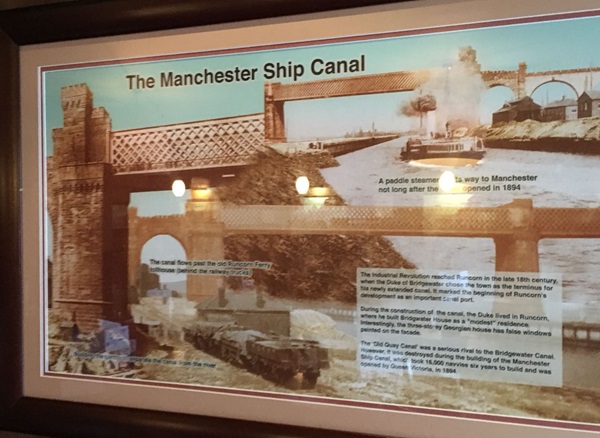
The text reads: The Industrial Revolution reached Runcorn in the late 18th century, when the Duke of Bridgewater chose the town as the terminus for his newly extended canal. It marked the beginning of Runcorn’s development as an important canal port.
During the construction of the canal, the Duke lived in Runcorn, where he built Bridgwater House as a ‘modest’ residence. Interestingly, the three storey Georgian house has false windows painted on the façade.
The Old Quay Canal was a serious rival to the Bridgewater Canal. However, it was destroyed during the building of the Manchester Ship Canal, which took 16,000 navvies six years to build and was opened by Queen Victoria in 1894.
Prints and text about Runcorn’s royal connections.
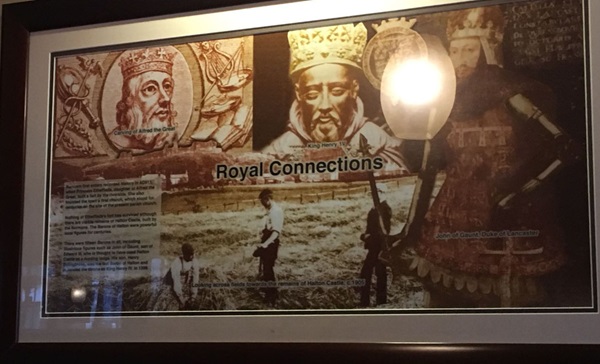
The text reads: Runcorn first enters recorded history in AD915, when Princess Ethelfleda, daughter of Alfred the Great, built a fort by the riverside. She also founded the town’s first church, which stood for centuries on the site of the present parish church.
Nothing of Ethelfleda’s fort has survived although there are visible remains of Halton Castle, built by the Normans. The Barons of Halton were powerful local figures for centuries.
There were fifteen Barons in all, including illustrious figures such as John of Gaunt, son of Edward III, who is thought to have used Halton Castle as a hunting lodge. His son, Henry Bolingbroke, was the last Baron of Halton and ascended the throne as King Henry IV, in 1399.
External photograph of the building – main entrance.
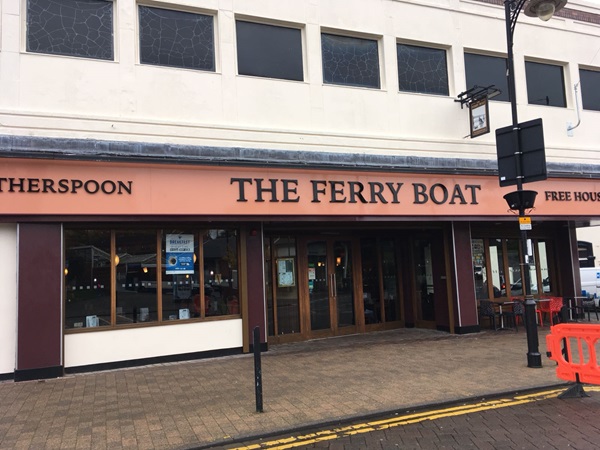
If you have information on the history of this pub, then we’d like you to share it with us. Please e-mail all information to: pubhistories@jdwetherspoon.co.uk